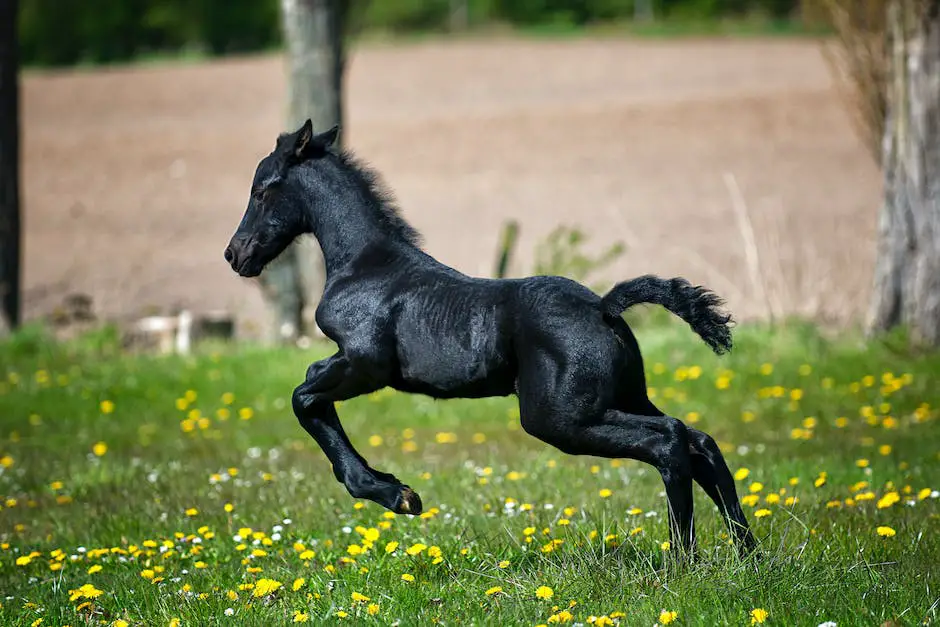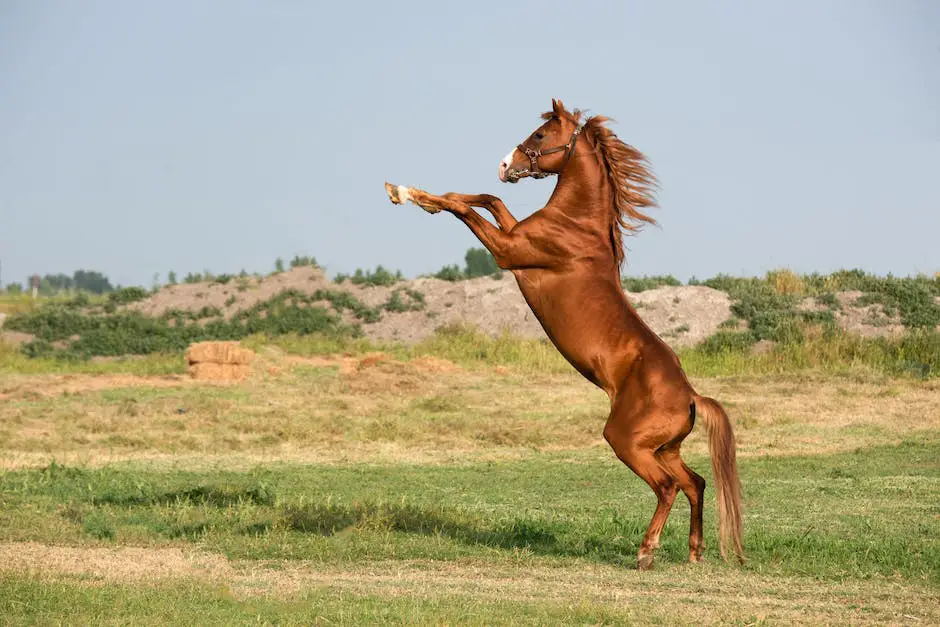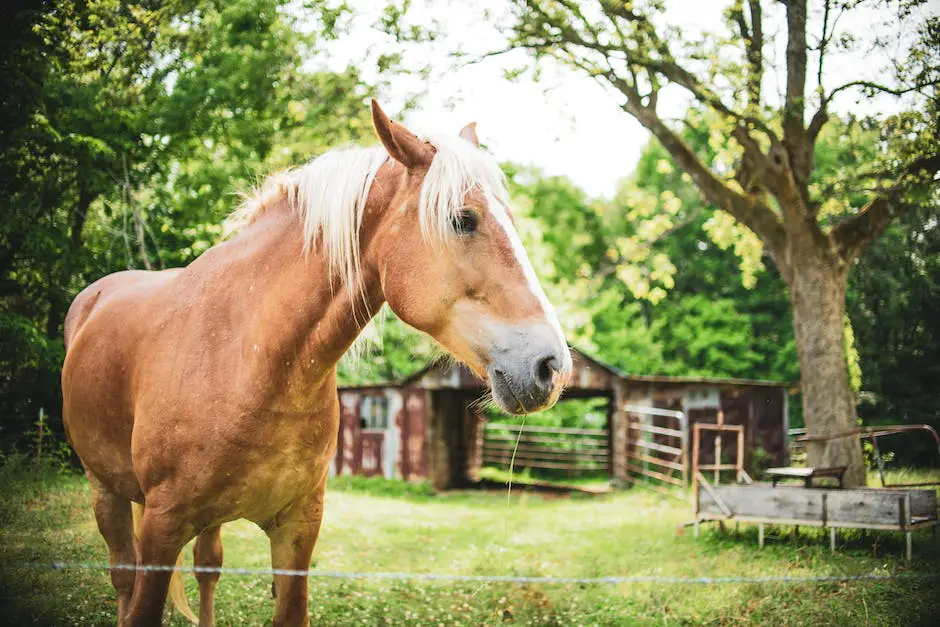The majesty of the Shire and Belgian Draft Horse breeds has left an indelible mark in equine history, showcasing not only their immense contributions to human society but also their distinct characteristics and capabilities. The Shire Horse, a spectacular symbol of England’s horse-breeding prowess, and the Belgian Draft, one of the strongest horse species globally, are both worthy of exploration rather than superficial comparison. Both breeds are known for their workhorse stamina, horsepower, and gentleness despite their gargantuan builds. However, while they share similar traits and roles, the Shire Horse and Belgian Draft possess unique attributes, capabilities, and histories that make each breed fascinating in its own right.
Table of Contents (Horspedia)
Characteristics and History of Shire Horse
Shire Horse: A Historic Workhorse
The Shire Horse traces its origins back to England’s medieval war horses, also known as the “Great Horse.” The Shire Horse, characterized by its immense size and strength, was originally bred for heavy farm labor and transport. These powerful horses would pull carts filled with goods, logs of timber, and even artillery during wartime.
Physically, an average Shire Horse stands at around 17 to 19 hands high (a “hand” equates to roughly 4 inches) and can weigh between 1,800 and 2,400 pounds. These horses are renowned for their muscular build, broad chest, and powerful legs. Shire Horses usually come in black, bay, or grey.
In terms of temperament, Shire Horses are known for their calm and docile nature, despite their intimidating stature. They are intelligent and easily trainable, making them highly cooperative in various labor tasks.
The Shire Horse’s contribution to human civilization is immense. Before the advent of mechanized transportation and farming, these horses were a vital component of industries, particularly in agriculture and transportation.
The Belgian Draft: Europe’s Gentle Giant
The Belgian Draft, also known as the Brabant, originated from the Brabant region in modern-day Belgium. Historically, these horses were bred for heavy farm labor, similar to the Shire Horse.
Belgian Draft Horses stand at around 16 to 17 hands high and can weigh between 1,800 and 2,200 pounds. They are typically of a stocky build, with a strong neck and powerful legs. Their usual colors include chestnut, bay, and roan.
Despite their robust appearance, Belgian Draft horses are known for their good-natured and easy-going temperament. They are highly intelligent and trainable, making them perfect for heavy-duty tasks.
In relation to their contribution to human civilization, Belgian Draft horses have been used extensively in farming and war. Similar to the Shire Horse, the Belgian Draft played a pivotal role in agriculture and transportation before the industrial revolution.
Shire Horse Vs. Belgian Draft: A Comparative Look at These Behemoths
Reviewing the Shire Horse alongside the Belgian Draft unravels a web of resemblances and disparities. Descending from lines of hardy war and farm horses, both breeds command enormous stature, impressive muscular build, and commendable personality traits. Typically, Belgian Drafts possess a more robust build and wider necks, while Shire Horses stand tall with their pronounced feathering on their lower limbs.
Both breeds hail from cooler European regions hence their comfortable adaptation to cold climates. However, the Shire Horse, with its thicker coat and high endurance, could have a slight leg up when negotiating severe weather conditions and rigorous workloads.
With regards to intelligence and work ethics, both breeds are on par. Their tranquil demeanor, trainability, and docility are attributes that have proven invaluable throughout history. Nonetheless, nuances in character traits will differ from horse to horse, and the bond between horse and owner is equally valuable.
Therefore, whether a Belgian Draft or a Shire Horse catches one’s fancy hinges on personal preference and task specifics. Both breeds offer a unique blend of characteristics that underscore their historical and ongoing importance.

Characteristics and History of Belgian Draft
The Belgian Draft: Recounting its Origins
The Belgian Draft Horse, one of the mightiest draft horse breeds globally, can trace its roots back to the heavy horses used by knights during medieval times. Originating in Belgium, selective breeding over centuries has shaped these horses into invaluable contributors in agriculture, transportation, and warfare. By the late 19th century, the United States began importing Belgian Draft Horses, eventually leading to the American Association of Importers and Breeders of Belgian Draft Horses establishment in 1887.
Physical Attributes: The Gentle Giants
Physically, Belgian Draft Horses are renowned for their incredible strength and massive size. Males typically weigh between 1,800 and 2,200 pounds, while females weigh between 1,600 and 2,000 pounds. Despite their size, they have a well-proportioned and muscular body with a broad chest. Belgian drafts are also known for their short, powerful legs, and large hooves. Their coat colors range from chestnut to roan and blonde.
Temperament: Giants with a Heart
Belgian Draft Horses may be large and powerful, but their temperament could be described as “gentle giants”. They are known for their calm and docile nature, making them easy to work with. Aside from their reliable work ethics, they also possess a friendly personality that makes them popular as family pets.
Modern Applications: Versatility at Work
Up to this day, Belgian Draft Horses continue to be key players in various sectors such as forestry and agriculture. Their notable strength allows them to perform heavy-duty work like pulling logs or ploughing fields. Moreover, their hearty constitution makes them great endurance horses, suitable for long-distance trail rides.
The Belgian Draft vs Shire Horse: A Comparative View
Comparatively, Shire Horses are known for their immense size and height, often taller than the Belgian Draft. Shires were historically used in England for similar purposes, but they have longer legs and a more defined feathering around the legs compared to Belgian Drafts.
Belgian Draft and Shire Horse both display a calm and gentle nature, making them highly desirable for those seeking working horses or family pets. Both breeds have contributed significantly to human society, being indispensable in wars, transportation, agriculture, and even in entertainment industry. They may differ in minor physical attributes and place of origin, but they share an honorable heritage and a commendable role in society.
A Celebration of Strength and Grace
The towering figures of the Belgian Draft and Shire horses embody unparalleled strength, endurance, and mild-mannered nature, earning their place in the hearts of draft horse enthusiasts. Their enduring historical legacy and their continued presence in modern tasks bear witness to the profound bond between humans and horses.

Comparison Between Shire and Belgian Draft Horses
A Contrast in Physical Traits: Shire Oversteps Belgian Draft
Both the Shire and Belgian Draft horses feature prominently among the largest horse breeds globally. Shire horses generally have a height advantage, standing typically between 17 to 19 hands, with exceptional ones scaling up to 22 hands. They exhibit power with their wide and muscular frames, elongated necks and long legs. Their distinct features include a well-defined or slightly convex nose profile, most commonly draped in black, bay, or grey hues.
Conversely, Belgian Draft horses are usually 16.2 to 17 hands high, with the tallest rising close to 18 hands. Their bodies are robust and tightly packed, with shorter legs relative to the Shire. Their well-sculpted head features a small, straight, or lightly concave face. They are predominantly light chestnut in color, complemented with a flaxen mane and tail.
Temperament and Trainability
Both the Shire and the Belgian Draft are known for their friendly, calm, and willing temperament. These horses were bred to be workhorses and their gentle nature makes them reliable and safe to work with.
In terms of trainability, both breeds are intelligent and eager to learn. Shire horses are usually described as zealous workers, showing enthusiasm about their tasks, while Belgians are more known for their tractability, often described as “easygoing”.
Health Issues
Overall, both Belgian Draft and Shire horses are resilient breeds with relatively few breed-specific health issues. The most notable health problem in Shires is Chronic Progressive Lymphedema, a disease that causes swelling, hardening, and heavy creases in the lower legs. Functional problems may occur in Belgian Draft horses as a result of their bulk such as locomotion difficulties and breathing problems.
Roles in Society
Historically, the Shire horse was used for war, as draught animals, and later on, they were used in agriculture, towing barge boats along rivers and canals. In modern times, they are most often seen in horse shows, parades, and as drum horses for ceremonial purposes in the UK.
Belgian Draft horses, on the other hand, were originally used as farm horses and for heavy haulage. Nowadays, they are used as show horses and for recreational pulling. Belgians are also used in therapeutic riding programs due to their calm disposition and sturdy frame.
Preference in Various Applications
The selection between Shire and Belgian Draft horses largely depends on the purpose or job required. In the case of farming and pulling, Belgian Drafts are often preferred due to their incredible strength and endurance. For riding and showing, Shire horses have an advantage due to their height and impressive appearance. For sports, neither breed excels particularly, as their size and weight do not lend well to speed. They are, however, used in pulling contests at fairs and shows, where their strength and endurance are admired.
In conclusion, both the Shire and Belgian Draft horses have continued to be favored breeds due to their massive size, incredible strength, friendly nature, and willingness to work.

Whether it’s the towering grace of the Shire Horse or the muscular brilliance of the Belgian Draft, it’s clear that both breeds have made impactful contributions throughout history and continue to captivate enthusiasts and experts alike. They stand as spectacular examples of equine strength, agility, and nobility, embodying the essence of cooperation between humans and this magnificent species. The exploration of these breeds’ features, demeanors, and stories further supports the assertion that even though they have been primarily bred for hard labor, both the Shire and Belgian Draft embody an array of admirable qualities. These qualities extend beyond physical prowess, stretching into the realms of demeanor, interaction with humans, and adaptability to various roles.. Ultimately, the Shire and Belgian Draft are embodiments of equine versatility and evolutionary prowess, affirming the enduring bond between humanity and horses.